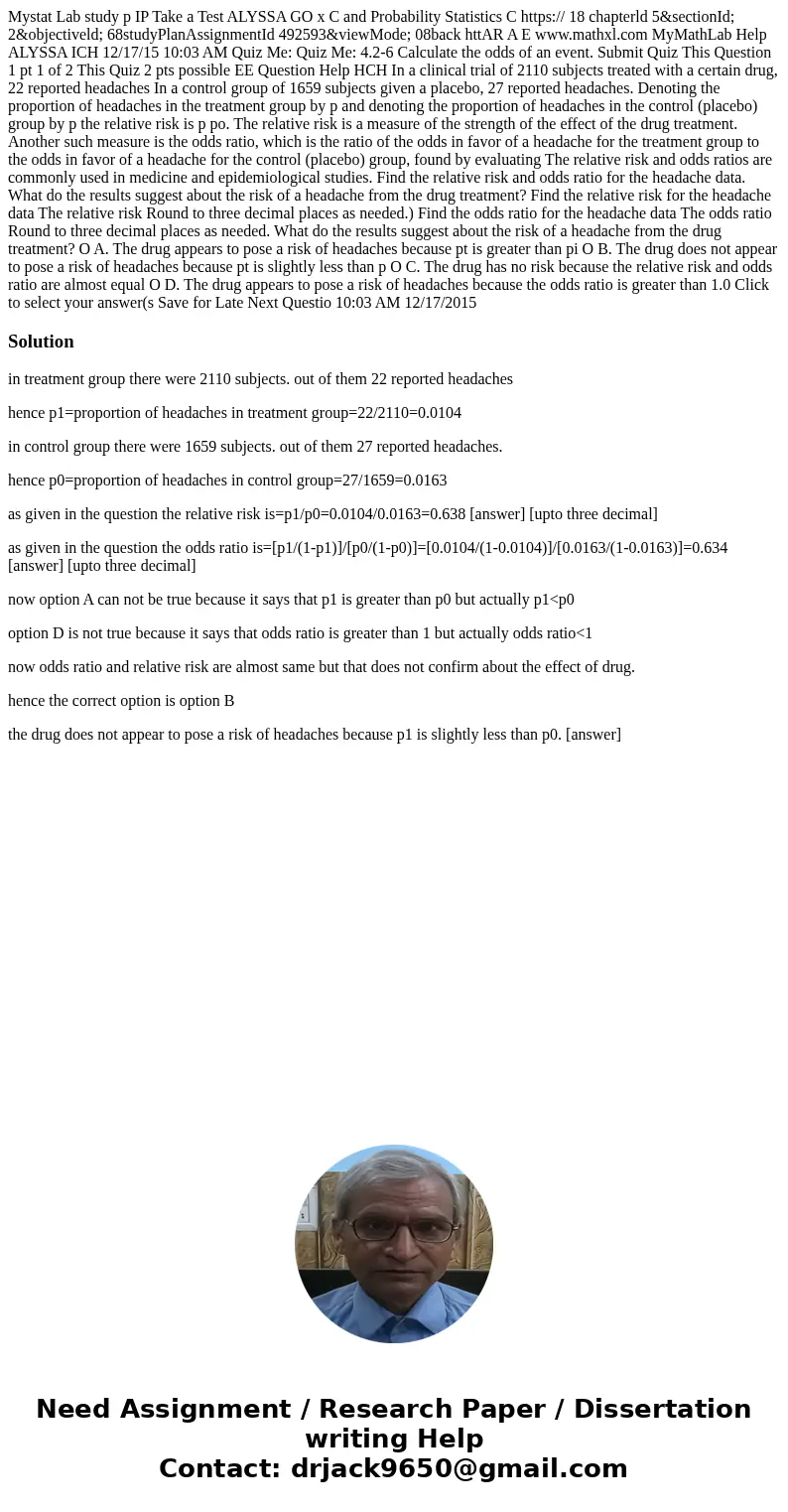Mystat Lab study p IP Take a Test ALYSSA GO x C and Probability Statistics C https:// 18 chapterld 5§ionId; 2&objectiveld; 68studyPlanAssignmentId 492593&viewMode; 08back httAR A E www.mathxl.com MyMathLab Help ALYSSA ICH 12/17/15 10:03 AM Quiz Me: Quiz Me: 4.2-6 Calculate the odds of an event. Submit Quiz This Question 1 pt 1 of 2 This Quiz 2 pts possible EE Question Help HCH In a clinical trial of 2110 subjects treated with a certain drug, 22 reported headaches In a control group of 1659 subjects given a placebo, 27 reported headaches. Denoting the proportion of headaches in the treatment group by p and denoting the proportion of headaches in the control (placebo) group by p the relative risk is p po. The relative risk is a measure of the strength of the effect of the drug treatment. Another such measure is the odds ratio, which is the ratio of the odds in favor of a headache for the treatment group to the odds in favor of a headache for the control (placebo) group, found by evaluating The relative risk and odds ratios are commonly used in medicine and epidemiological studies. Find the relative risk and odds ratio for the headache data. What do the results suggest about the risk of a headache from the drug treatment? Find the relative risk for the headache data The relative risk Round to three decimal places as needed.) Find the odds ratio for the headache data The odds ratio Round to three decimal places as needed. What do the results suggest about the risk of a headache from the drug treatment? O A. The drug appears to pose a risk of headaches because pt is greater than pi O B. The drug does not appear to pose a risk of headaches because pt is slightly less than p O C. The drug has no risk because the relative risk and odds ratio are almost equal O D. The drug appears to pose a risk of headaches because the odds ratio is greater than 1.0 Click to select your answer(s Save for Late Next Questio 10:03 AM 12/17/2015
in treatment group there were 2110 subjects. out of them 22 reported headaches
hence p1=proportion of headaches in treatment group=22/2110=0.0104
in control group there were 1659 subjects. out of them 27 reported headaches.
hence p0=proportion of headaches in control group=27/1659=0.0163
as given in the question the relative risk is=p1/p0=0.0104/0.0163=0.638 [answer] [upto three decimal]
as given in the question the odds ratio is=[p1/(1-p1)]/[p0/(1-p0)]=[0.0104/(1-0.0104)]/[0.0163/(1-0.0163)]=0.634 [answer] [upto three decimal]
now option A can not be true because it says that p1 is greater than p0 but actually p1<p0
option D is not true because it says that odds ratio is greater than 1 but actually odds ratio<1
now odds ratio and relative risk are almost same but that does not confirm about the effect of drug.
hence the correct option is option B
the drug does not appear to pose a risk of headaches because p1 is slightly less than p0. [answer]

 Homework Sourse
Homework Sourse